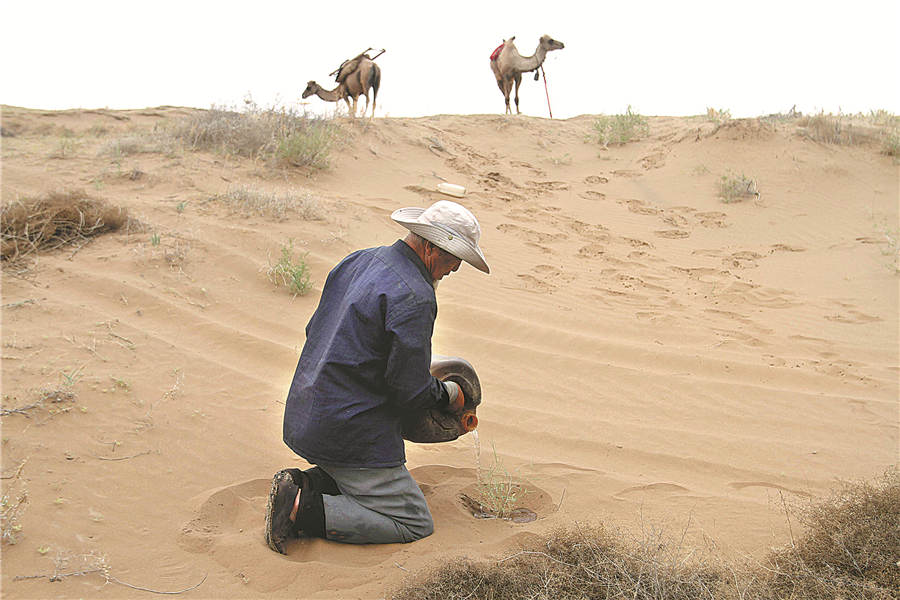

"It's not easy to plant trees, especially in the desert. I just dug a tree hole the first day, and I filled it up overnight. The seedlings were dead and I had to replant them. If the specially designed grass blocks were broken, they would be repaired, in order to find out the flow of sand," he says. To improve the survival rate of sand-grown seedlings in the desert, Wang observed the flow of sand dunes in areas where it was most severe in the 12th lunar month in winter. He also explored the best spots for planting grass and trees, and gradually found effective methods for planting saplings in the desert. In order to tackle the problem of water scarcity, Wang bought two-humped camels. His wife led the camels to transport water on a route of more than 3 kilometers between their home and the desert back and forth every four and five hours.
In order to save water, Wang used a spoon to water the young saplings planted in the desert-one spoon at a time, without daring to waste it at all. They cherished the water so much that they didn't even wash pots, bowls, and chopsticks after meals. Instead, they used clean sand to wash their tableware. After washing their face in the morning, the water was kept for reuse at noon. When washing their feet, they just rubbed them with sand.